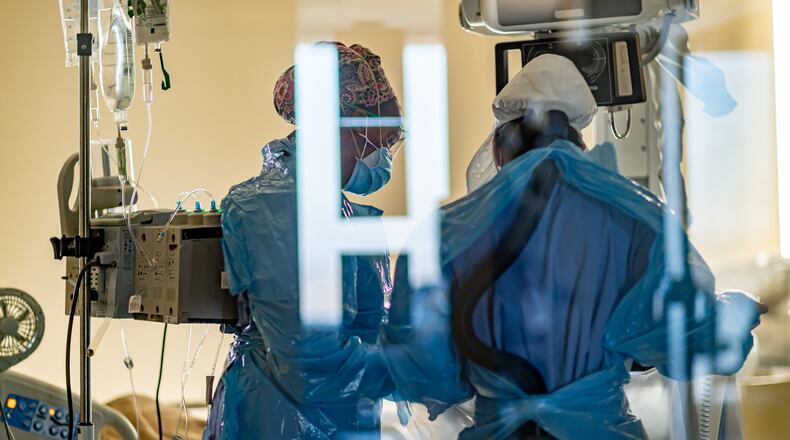- About 1 in 5 inpatients in Ohio’s hospitals are COVID-19 positive, according to the Ohio Hospital Association.
- About 1 in 4 patients in an Ohio ICU are COVID-19 positive.
- Compared to 21 days ago, the number of COVID-19 patients in Ohio hospitals has risen 51%. When cases were falling, the count reached as low as 2,202 patients on Nov 7.
Ohio Department of Health reports 26,483 people have died from COVID-19, though that is preliminary data and some information is received on a delay.
About 6.74 million Ohioans have at least started a COVID-19 vaccine, or an estimated 58% of the state population.
About 1.58 million fully vaccinated Ohioans have received an additional dose.
There’s been a recent increase in people who have never received a COVID-19 vaccine starting one for the first time.
This increase in new vaccinations comes as new vaccination requirements are about to start for hospitals, nursing homes, and many other workplaces.
Ohio reported 4,245 new cases of COVID-19 on Sunday.
The 21-day average of reported new cases is 5,026, according to the Ohio Department of Health, which released updated statistics this afternoon.
Hospitalizations, cases and vaccination rates all vary widely from community to community, with more detail at coronavirus.ohio.gov.
As of Friday, about 14.7% of daily COVID-19 lab confirmed tests were coming back positive, with a little under 19,000 total tests ran that day. The percent of tests detecting the coronavirus has been steadily increasing through November, at a pace slightly ahead of the rise in hospitalizations.
The Dayton Daily News reported today that Ohio experts are forecasting this is the beginning of another surge in COVID-19 for this winter. However, vaccines will likely mean fewer hospitalizations and deaths than last year, and the brunt of it will be borne by unvaccinated people.
About the Author

